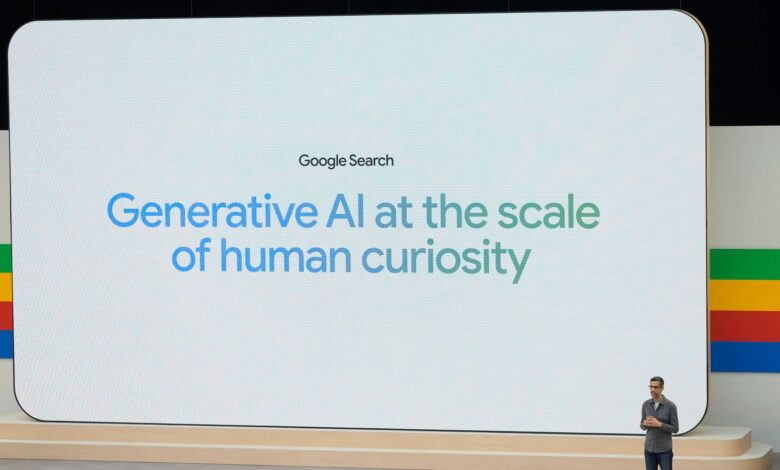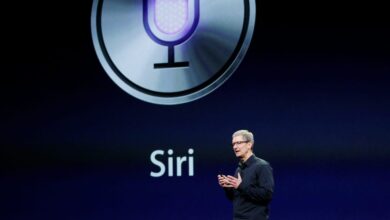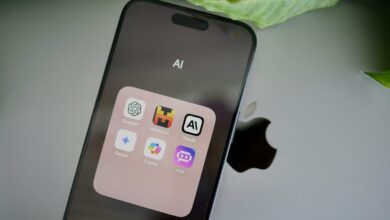Generative AI video: Excitement tempered with scepticism

New Delhi: A week ago, Google unveiled a new generative AI video model—Veo. In some ways, this was Google’s direct salvo at younger upstart and rival, OpenAI’s headlining Sora.
New Delhi: A week ago, Google unveiled a new generative AI video model—Veo. In some ways, this was Google’s direct salvo at younger upstart and rival, OpenAI’s headlining Sora.
Both claim to generate cinematic-grade video clips with just a few words of text. This has sparked debate around AI’s impact on the intrinsically artistic filmmaking and advertising industries. Yet, their potentially magical abilities appear to be drawing a lukewarm early reaction at best.
Premium benefits
35+ Premium articles every day
Specially curated Newsletters every day
Access to 15+ Print edition articles every day
Subscriber only webinar by specialist journalists
E Paper, Archives, select The Wall Street Journal & The Economist articles
Access to Subscriber only specials : Infographics I Podcasts
Unlock 35+ well researched
premium articles every day
Access to global insights with
100+ exclusive articles from
international publications
Get complimentary access to
3+ investment based apps
TRENDLYNE
Get One Month GuruQ plan at Rs 1
FINOLOGY
Free finology subscription for 1 month.
SMALLCASE
20% off on all smallcases
5+ subscriber only newsletters
specially curated by the experts
Free access to e-paper and
WhatsApp updates
Both claim to generate cinematic-grade video clips with just a few words of text. This has sparked debate around AI’s impact on the intrinsically artistic filmmaking and advertising industries. Yet, their potentially magical abilities appear to be drawing a lukewarm early reaction at best.
Three content creators, as well as three filmmaking and advertising veterans that Mint spoke with concurred on one point—while it is too early to raise any verdict since neither Veo and nor Sora are available to even try in India at the moment, the general consensus is that they may not be mainstays for video production.
Instead, the footage that could be generated by AI models such as these may at best be used to easily visualize scripts in the pre-production stage, or create filler or ‘B-roll’ content that is used for background purposes in longer, more expansive movies and advertisements.
Other AI models
To be sure, Sora and Veo are not the only ones. On 27 January, Google Research unveiled Lumiere—a new text-based AI model that claimed to “portray realistic, diverse and coherent motion.”
Beyond Big Tech, generative video tools have been available to the general public to fiddle with for more than a year now—from Synthesia to Runway.
These show serious potential for generative video models. Both OpenAI and Google claim multi-modality of their video generation models is a key ability, and given Big Tech’s might and vast resources of computing and data available at hand, can make for a serious resource for creative professionals to either leverage, or contend with.
For instance, Bengaluru-based technology content creator Varun Mayya, who has a cumulative following of nearly 2.2 million viewers across his multiple Instagram and YouTube channels, uses AI to generate filler footage as well as piece-to-camera videos for many of his content. While Mayya focuses on AI-based educational video content for developers and engineers, he has also used AI to gain assistance in his video production schedule.
While Mayya has leveraged AI, many others keep away. Two other content creators, who work closely with YouTube and requested anonymity to protect their respective brand partnerships, expressed that generative video platforms may not be comprehensive and could lead to branding complications.
“Brands may not prefer knowing that any specific video was used with generative AI—there is a fear in the market that using AI videos could lead to copyright lawsuits, and no commercial entity wants such complications. This is a hindrance right now in India, at least until there is regulatory and legal clarity,” one of the creators told Mint.
Each of these creators, however, confirmed that generative AI is well and truly being used in India at more than an experimental pace. While the early mood is anticipatory, it is also lukewarm—some cite quality issues, while others are concerned about intellectual property infringements.
“Most content creators sign originality agreements with clients. For them, if the material used to train a generative AI model belongs to a third party, and this reflects in the output, this could lead to an infringement of intellectual property,” said Shailendra Bhandare, partner at law firm Khaitan & Co.
“This is because the resultant output would be a derivative work from a third-party material, and multiple clients may get the same results if they use the same software. This could also lead to a breach of contract situation, and infringement of third-party IP,” said Shailendra Bhandare, partner at law firm Khaitan & Co.
Content oversaturation
Creative veterans, too, have a mixed view. Yash Kulshresth, chief creative officer at Mumbai-based creative agency Atom Network, said that most AI tools so far, based on initial inspection and review, “lack the emotional depth and unique perspective that humans bring.”
“On the positive side, it can make visualizing storyboards and concepts more efficient and cost-effective. This democratization of creativity can enable smaller agencies and independent creators to compete more effectively and foster a new era of rapid prototyping and iterative feedback. It can also serve as a good alternative to regular hygiene content pieces for brands to put up on social media,” Kulshresth said.
However, he added that content oversaturation is a significant risk. “The ease of generating visuals might lead to an abundance of mediocre content. This could make it more challenging for truly innovative ideas to stand out. The key will be for creatives to leverage AI as a tool that enhances their work, focusing on originality, authenticity, and emotional connection to maintain the distinctiveness of human-driven creativity,” he said.
Death of creativity?
Despite this, all parties acknowledge that AI is an evolving field, which makes it difficult to predict its long-term impact. On 22 April, Synthesia unveiled its latest AI model—Express-1. The latter showed the ability to generate avatars that could mimic human speech, thus potentially replacing an anchor narrating a story on screen. Synthesia is also quite serious about its work—it is part of the Coalition for Content Provenance and Authenticity (C2PA) body that includes Google, Microsoft and OpenAI.
Fellow upstart Runway unveiled its latest model, Gen-2, in March last year. Since then, the company has showcased various video-generating capabilities of its AI model, and has even established an ‘AI Film Festival’ in Los Angeles, US with Nvidia as a partner. On 15 April, the company announced 10 winners of films made using its AI model and tool—offering nearly $35,000 in cash prizes.
This clearly reflects AI’s potential. “We have never seen something like this. It would be naive to think of our current response as cast in stone. It’s just the beginning of AI, and ultimately, the future of our industry will be defined by the synergy between human creativity and technological advancements, ensuring that the heart and soul of our work remain unmistakably human,” Kulshresth added.
“A fundamental thing to understand is that AI does not have its own imagination,” said Chaitanya Chinchlikar, vice-president and chief technology officer at Mumbai-based Whistling Woods International Film School.
“At the level of every pixel that AI creates, it will be a synthesis of content that an algorithm has already seen, or is trained upon. This will make AI an assisting tool at best for the visual creation industry, from which some segments of the industry might benefit. But this will certainly not take away jobs from creative professionals.”



